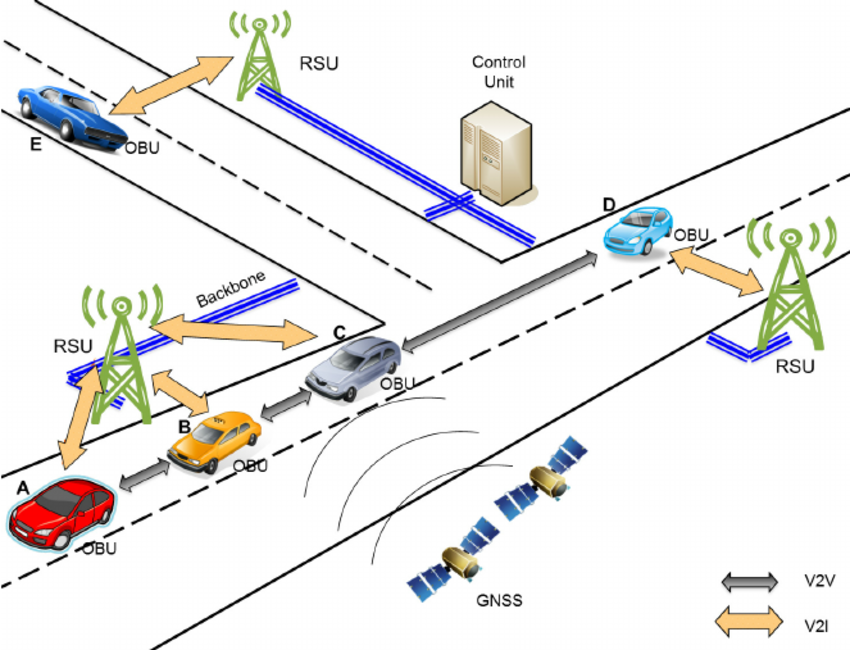V2V (Vehicle-to-Vehicle): The Future of Connected Car Communication
telcomatraining.com – In the rapidly evolving landscape of automotive technology, Vehicle-to-Vehicle (V2V) communication is emerging as a revolutionary advancement that has the potential to enhance road safety, optimize traffic flow, and pave the way for fully autonomous vehicles. By enabling direct communication between vehicles, V2V technology is set to transform the driving experience, making roads smarter and safer. This article explores the significance, benefits, and future of V2V communication in the context of connected car technology.
What is V2V Communication?
V2V communication refers to the wireless exchange of data between vehicles to improve situational awareness and prevent accidents. This system relies on Dedicated Short-Range Communication (DSRC) or Cellular Vehicle-to-Everything (C-V2X) technology to transmit real-time information such as speed, location, and direction. By continuously sharing this data, vehicles can anticipate potential collisions, warn drivers of hazards, and facilitate better traffic management.
How Does V2V Work?
V2V technology functions through onboard communication units that send and receive signals within a specific range. These signals carry crucial information about road conditions, vehicle speed, and sudden braking events. The system processes this data and alerts drivers or autonomous systems about potential risks, enabling timely action. Unlike traditional sensor-based systems, which rely on line-of-sight detection, V2V communication enhances safety by providing early warnings even in low-visibility conditions or around blind spots.
Benefits of V2V Communication
1. Enhanced Road Safety
One of the most significant advantages of V2V communication is its potential to reduce accidents. By providing real-time alerts about imminent collisions, lane departures, and road obstacles, V2V helps drivers make informed decisions and take preventive measures. The U.S. National Highway Traffic Safety Administration (NHTSA) estimates that V2V technology could prevent up to 80% of accidents involving unimpaired drivers.
2. Reduced Traffic Congestion
Traffic congestion is a major concern in urban areas. V2V communication can optimize traffic flow by allowing vehicles to coordinate with each other, adjusting speeds and routes accordingly. This intelligent coordination minimizes bottlenecks, reduces travel time, and enhances fuel efficiency.
3. Improved Fuel Efficiency and Emissions Reduction
By enabling smoother traffic flow and reducing the need for sudden braking and acceleration, V2V technology contributes to better fuel efficiency. Additionally, optimized driving behavior leads to lower carbon emissions, supporting environmental sustainability efforts.
4. Foundation for Autonomous Driving
V2V communication is a crucial component of the autonomous vehicle ecosystem. Self-driving cars require continuous data exchange to navigate safely in dynamic traffic conditions. By integrating V2V technology, autonomous vehicles can make split-second decisions based on comprehensive traffic data, ensuring a seamless driving experience.
Challenges in Implementing V2V Technology
While V2V communication holds immense potential, several challenges need to be addressed for widespread adoption.
1. Standardization and Compatibility
For V2V to be effective, vehicles from different manufacturers must be able to communicate seamlessly. Developing universal communication protocols and ensuring interoperability across various brands is crucial.
2. Cybersecurity Concerns
With vehicles exchanging vast amounts of data, cybersecurity becomes a major concern. Ensuring data privacy and protection from hacking attempts is essential to maintain user trust and system integrity.
3. Infrastructure Development
Implementing V2V technology requires substantial investment in infrastructure, including advanced traffic management systems and connectivity networks. Governments and automotive industries need to collaborate to build a robust ecosystem that supports V2V deployment.
The Future of V2V Communication
As automotive technology continues to advance, the future of V2V communication looks promising. Governments worldwide are investing in smart transportation initiatives, and automakers are integrating V2V capabilities into their latest models. With the rise of 5G technology, V2V communication will become even more reliable and efficient, accelerating the adoption of connected vehicles.
In the coming years, V2V communication is expected to play a pivotal role in achieving Vision Zero—a global initiative aimed at eliminating traffic fatalities. As regulatory bodies push for mandatory V2V implementation, we can anticipate a significant reduction in road accidents and a shift towards intelligent transportation systems.
Conclusion
V2V communication represents a transformative leap in automotive technology, offering enhanced safety, improved traffic management, and a foundation for autonomous driving. While challenges remain, ongoing advancements in connectivity and cybersecurity will drive the widespread adoption of V2V systems. As the automotive industry embraces this innovation, the future of transportation will be defined by smarter, safer, and more efficient roadways. V2V technology is not just the future—it is the next step towards revolutionizing mobility on a global scale.







